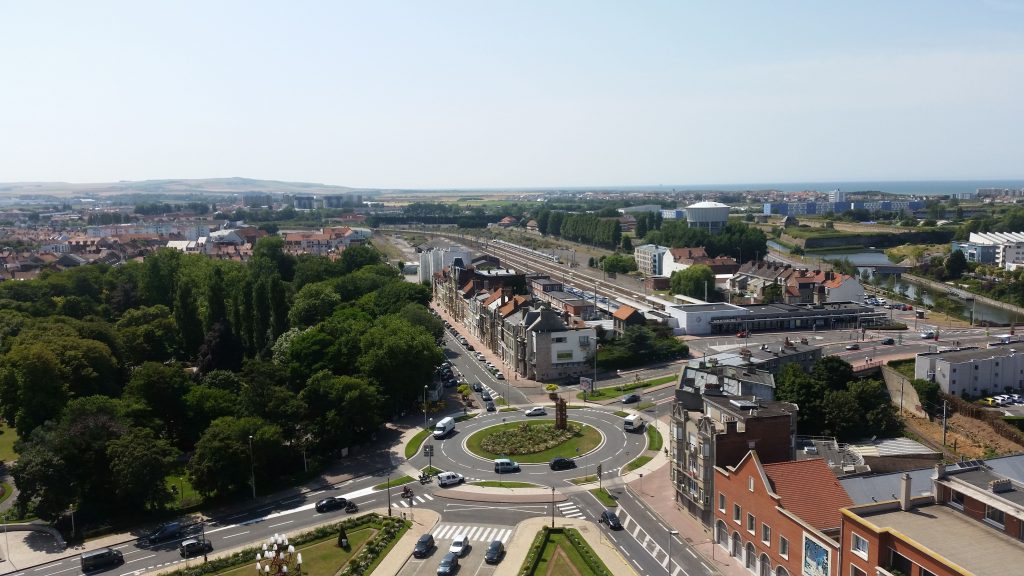Continuing the series profiling this year’s new University Music Performanc Scholars and Award Holders. This week, first-year Biomedical student and soprano, Ellie Gould.
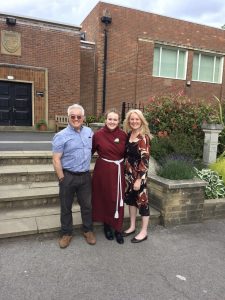 I began taking piano lessons when I was five years old and soon after, my teacher noticed I had good pitch, so offered to give me a few singing lessons to see if I enjoyed them (which I did!) 13 years later, I am still thoroughly enjoying both piano and singing, having reached up to Grade 8 standard on piano and achieving Distinction in both my Grade 8 exam and diploma in singing.
I began taking piano lessons when I was five years old and soon after, my teacher noticed I had good pitch, so offered to give me a few singing lessons to see if I enjoyed them (which I did!) 13 years later, I am still thoroughly enjoying both piano and singing, having reached up to Grade 8 standard on piano and achieving Distinction in both my Grade 8 exam and diploma in singing.
During primary school, my love for all things music grew even more, as my biggest excitement was the weekly music lessons, both in and out of school. I soon discovered my love of performing through taking part in the yearly Rotary Young Musician of the Year Competition and being involved in Stagecoach for eight years, which enabled me to take part in many productions; to name a few: Aida, Macbeth, Bugsy Malone and a Michael Jackson inspired ‘Thriller’ flash mob!
I would say that my musical journey really started to take off once high school began. It was towards the end of the summer holidays before the beginning of Year 7 that my Dad fortunately saw an advertisement in the newspaper regarding music scholarships at Harrogate Ladies’ College. As soon as I joined I fully immersed myself in all the musical opportunities that was on offer. I immediately joined Gallery Choir, which consisted of students from Year 6 to Year 9 and involved regularly performing at school events and singing works such as The Peacemakers by Jenkins in the Royal Hall, Harrogate. In order to improve my solo singing, I entered myself in both singing and piano at the annual Harrogate Music Festival.
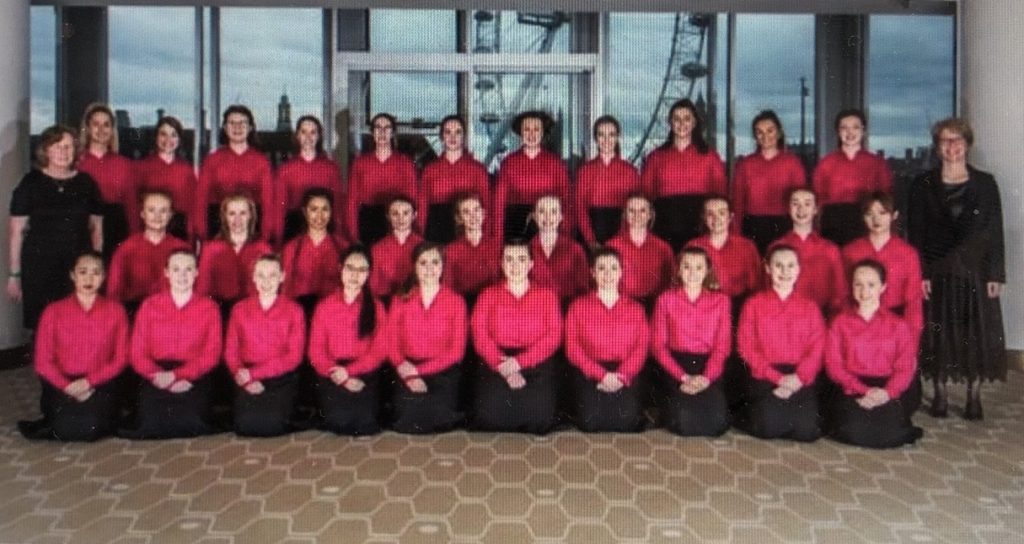
At the start of Year 9, I was accepted into my school’s prestigious Chapel Choir. The highlight of Chapel Choir for me were the biennial choir trips, including Barcelona where we sang in La Sagrada Familia and Venice where we sang Pergolesi’s Stabat Mater in St. Mark’s Basilica. Other moments I will never forget were singing live on TV in the semi-finals of BBC Songs of Praise Competition (mainly because we were all dressed in bright fuchsia pink shirts!), singing in the Royal Festival Hall in London for the Barnardo’s Choir of the Year Competition, Choral Evensongs in York Minster and Durham Cathedral, performing Britten’s challenging War Requiem in Ripon Cathedral and participating in the production of Purcell’s Dido and Aeneas.
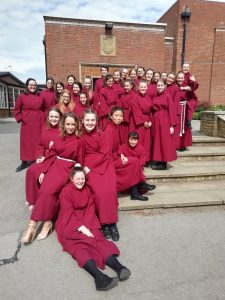 In rehearsals and certain performances, we sat in choir stalls in our school Chapel and after each year when students left, you would slowly make your way up the row to the front. It was so lovely because as I progressed further up the row, I was given more opportunities to develop my solo singing within the choir and undertake more responsibilities. This culminated in eventually me becoming Row Leader and during Year 13, I was chosen to be Head of Chapel Choir, which was and still is a position which meant so much to me. Having been a part of the choir going on five years at that point, it was such a lovely role to have to bring my time at Harrogate Ladies’ College to an end. Within this role my confidence in my own music ability grew massively. I was tasked with leading the choir during services, performances, keeping the beat during the unaccompanied morning Amen’s in Chapel (a much harder task than it originally seemed!) and regularly singing solos.
In rehearsals and certain performances, we sat in choir stalls in our school Chapel and after each year when students left, you would slowly make your way up the row to the front. It was so lovely because as I progressed further up the row, I was given more opportunities to develop my solo singing within the choir and undertake more responsibilities. This culminated in eventually me becoming Row Leader and during Year 13, I was chosen to be Head of Chapel Choir, which was and still is a position which meant so much to me. Having been a part of the choir going on five years at that point, it was such a lovely role to have to bring my time at Harrogate Ladies’ College to an end. Within this role my confidence in my own music ability grew massively. I was tasked with leading the choir during services, performances, keeping the beat during the unaccompanied morning Amen’s in Chapel (a much harder task than it originally seemed!) and regularly singing solos.
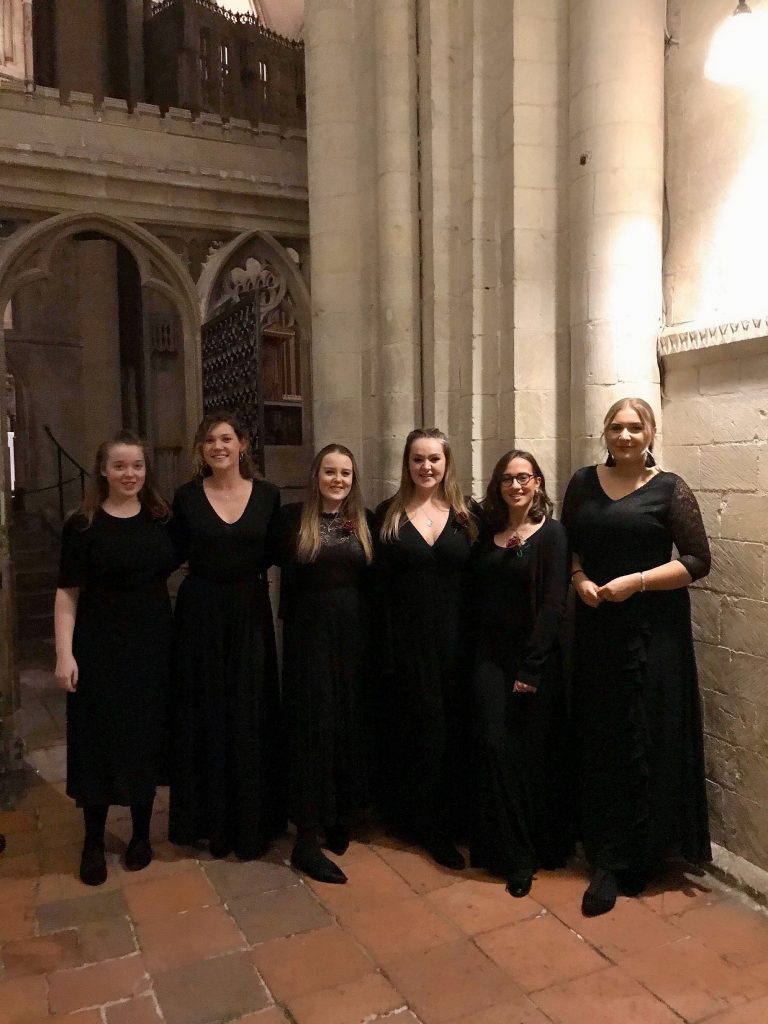
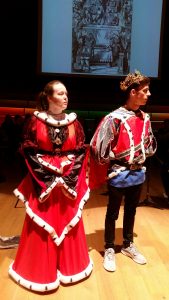 During my time so far as a Biomedical Science student at the University of Kent, all of the extra-curricular music activities has been a lovely way for me to relax away from my studies. I have been extremely lucky and grateful to be a part of the University Chorus, Chamber Choir, Cecilian Choir and a recipient of the Music Performance Scholarship. The Chamber Choir sang at the Cathedral for the Carol Service in December, and I’m currently singing the role of the Queen of Hearts for a production of Alice in Wonderland, and looking forward to singing in Canterbury Cathedral with the Chorus, Chamber Choir and at Choral Evensong with the Cecilian Choir later in the year.
During my time so far as a Biomedical Science student at the University of Kent, all of the extra-curricular music activities has been a lovely way for me to relax away from my studies. I have been extremely lucky and grateful to be a part of the University Chorus, Chamber Choir, Cecilian Choir and a recipient of the Music Performance Scholarship. The Chamber Choir sang at the Cathedral for the Carol Service in December, and I’m currently singing the role of the Queen of Hearts for a production of Alice in Wonderland, and looking forward to singing in Canterbury Cathedral with the Chorus, Chamber Choir and at Choral Evensong with the Cecilian Choir later in the year.
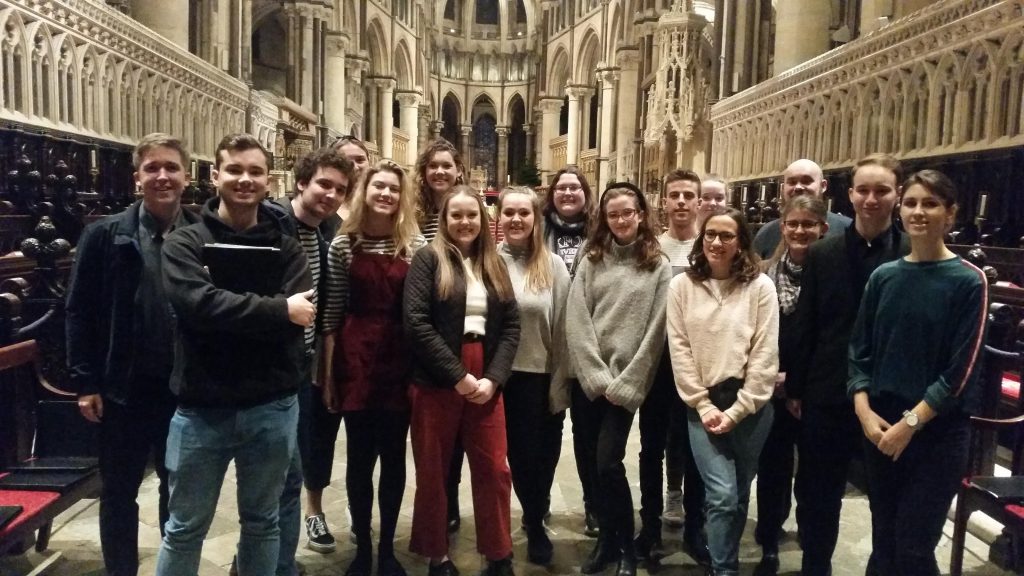

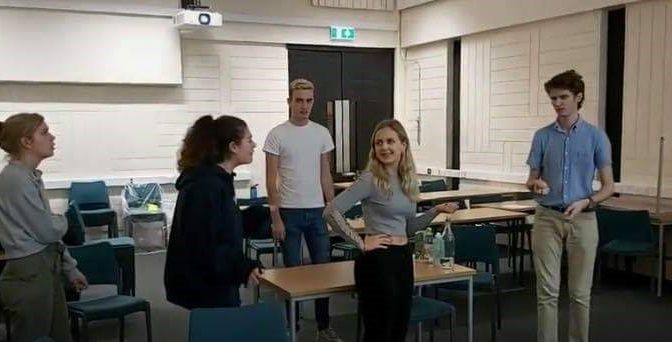

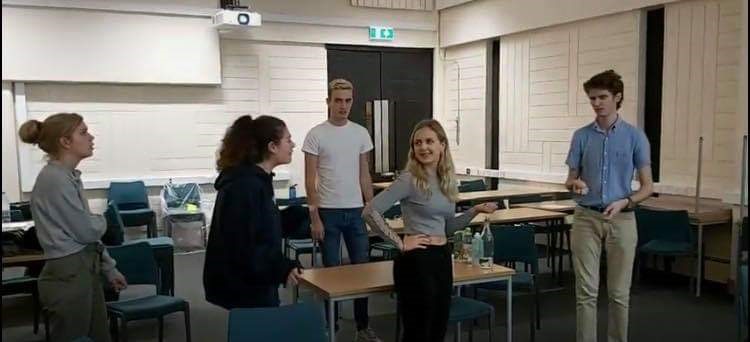
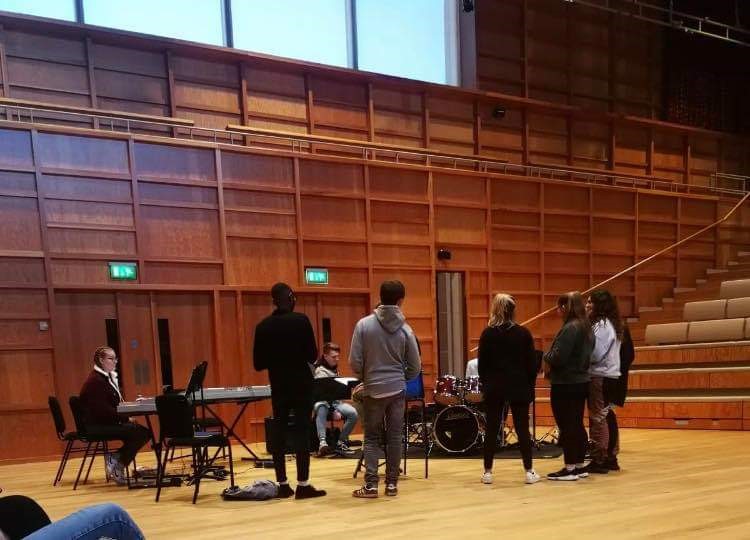
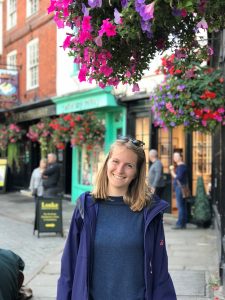 Music has always been a very important part of my life. I have been playing the recorder and the cello for 15 and 13 years respectively. In various orchestras and ensembles from Baroque to contemporary music, some of them international, I have experienced how music does not know any borders.
Music has always been a very important part of my life. I have been playing the recorder and the cello for 15 and 13 years respectively. In various orchestras and ensembles from Baroque to contemporary music, some of them international, I have experienced how music does not know any borders.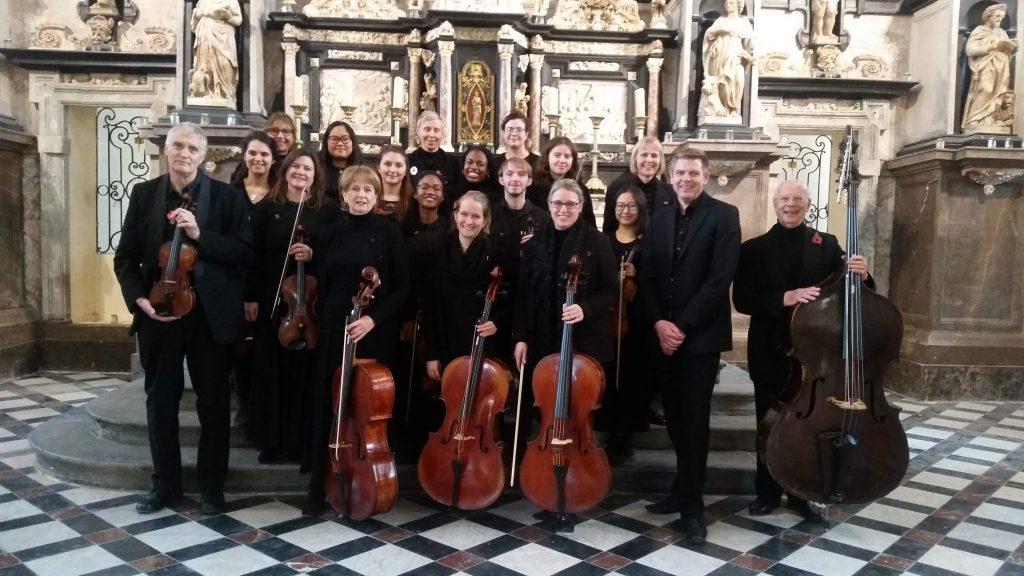
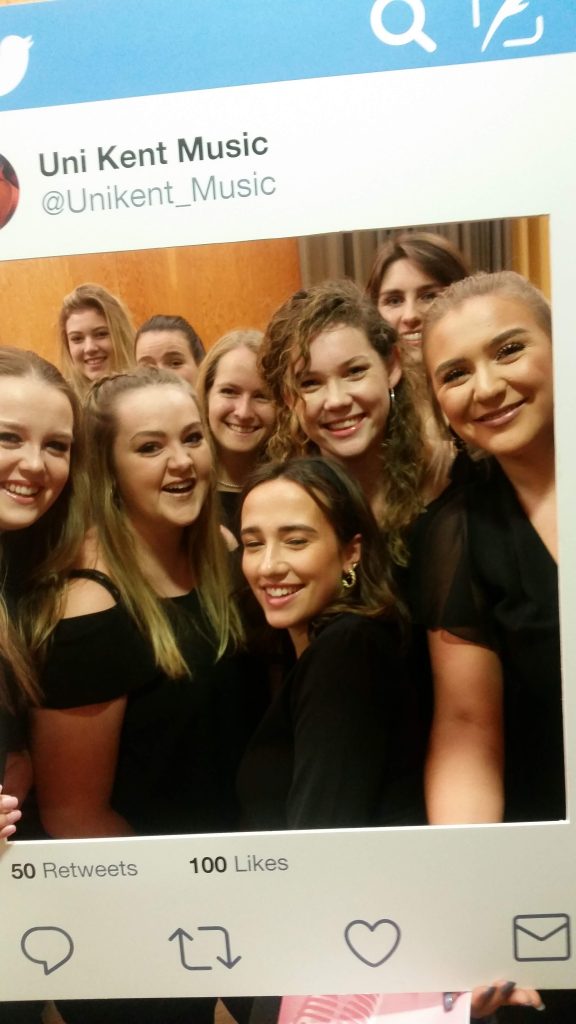 I am very excited for our next performance, the meditative Advent Breathing Space with Christmas carols and antiphons in a candlelit medieval church this Friday.
I am very excited for our next performance, the meditative Advent Breathing Space with Christmas carols and antiphons in a candlelit medieval church this Friday.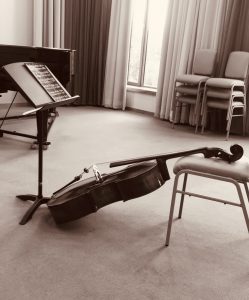 Even though you cannot study music on the University’s Canterbury campus, the Music Department offers an amazing variety of opportunities for students who want to get involved. It feels like all the different musicians and ensembles are part of one big family. I am very grateful to be part of that family.
Even though you cannot study music on the University’s Canterbury campus, the Music Department offers an amazing variety of opportunities for students who want to get involved. It feels like all the different musicians and ensembles are part of one big family. I am very grateful to be part of that family.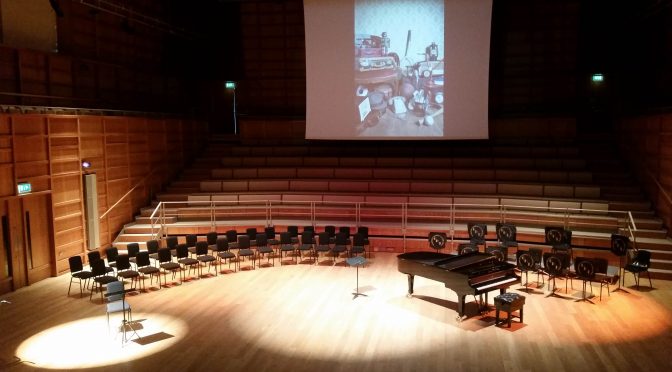
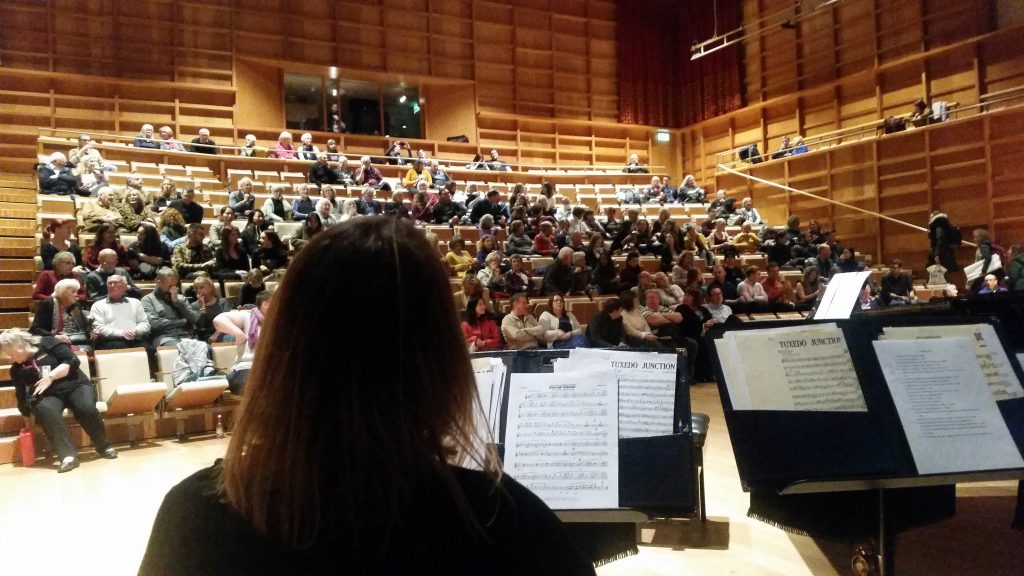

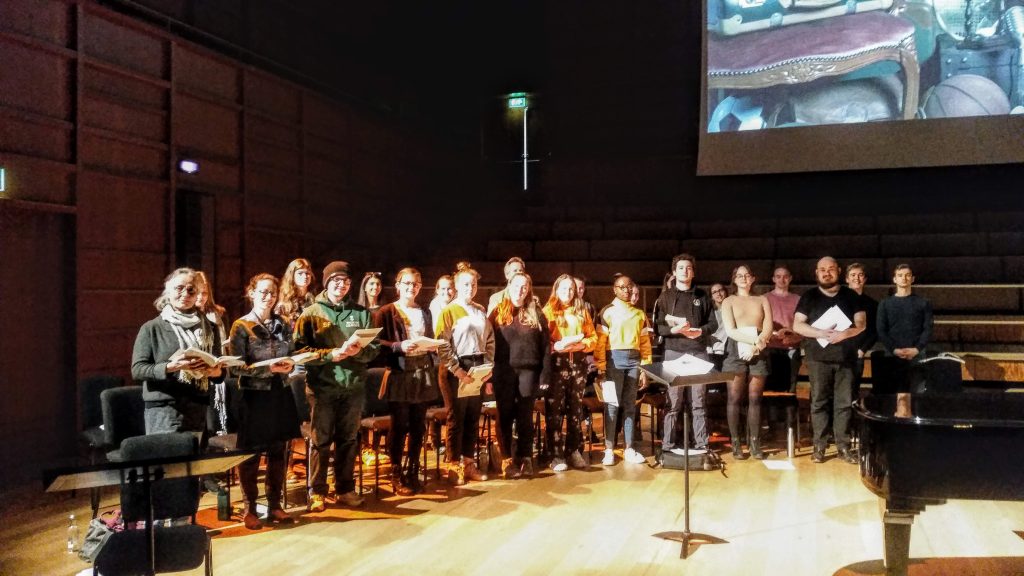
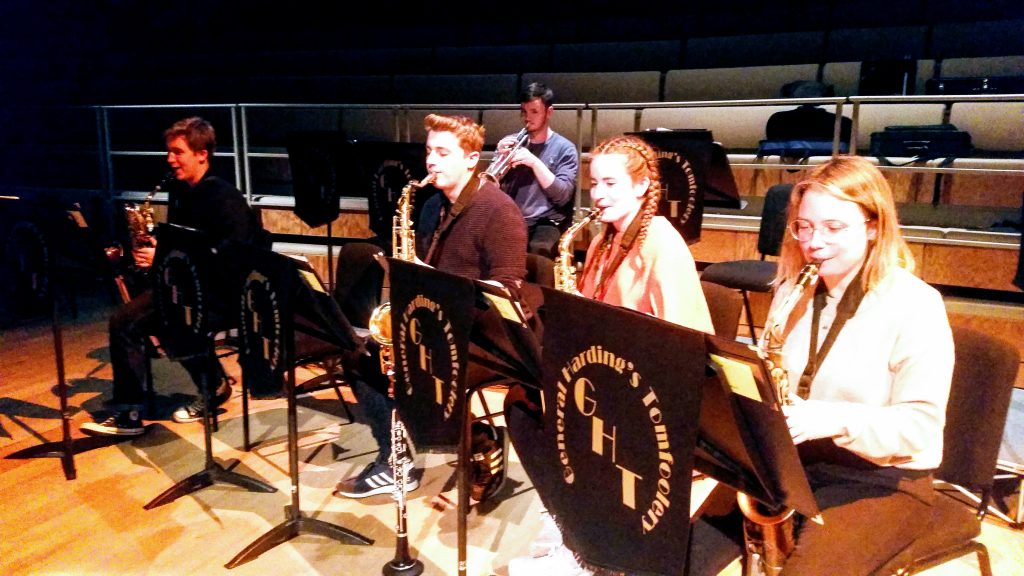
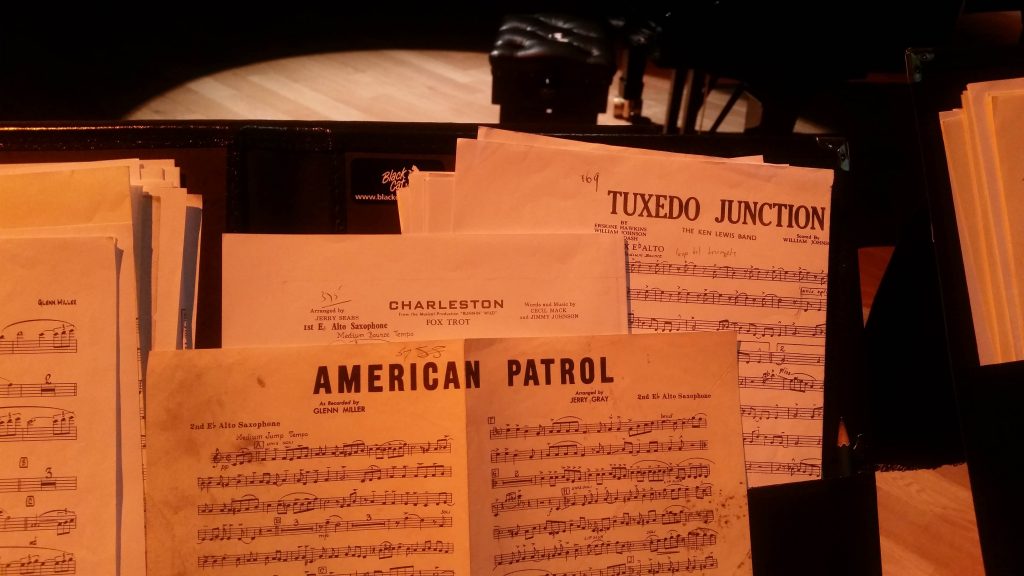
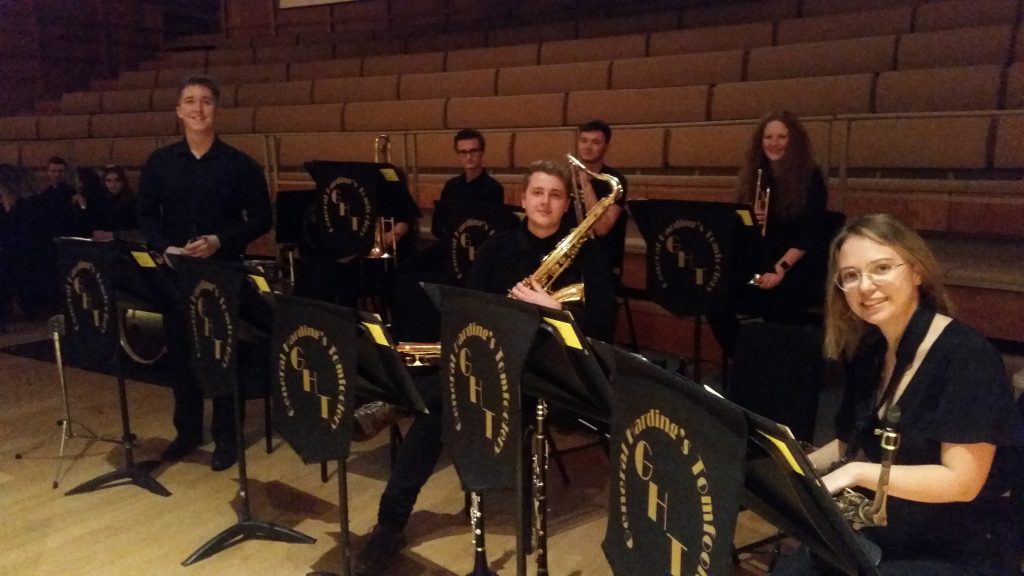 Tomfoolery also played the audience out with The Charleston and American Patrol, before performers and audience mingled in the foyer for a post-event glass of mulled wine.
Tomfoolery also played the audience out with The Charleston and American Patrol, before performers and audience mingled in the foyer for a post-event glass of mulled wine.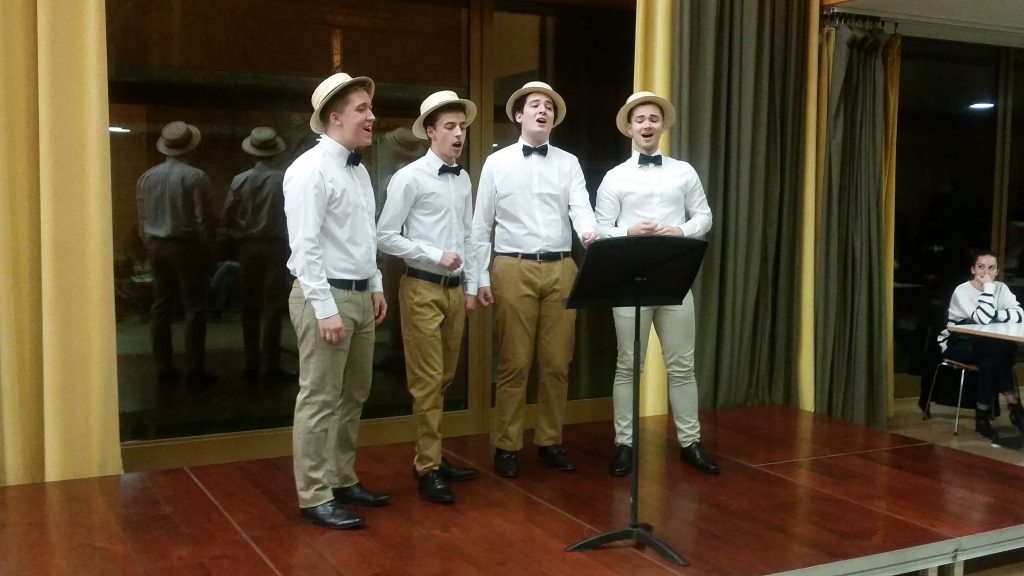 Before the event, the student barbershop quartet, the Razor Sharps, took to the foyer-stage to entertain the arriving audience with a selection of popular favourites, setting a suitable scene for a trip down Memory Lane.
Before the event, the student barbershop quartet, the Razor Sharps, took to the foyer-stage to entertain the arriving audience with a selection of popular favourites, setting a suitable scene for a trip down Memory Lane.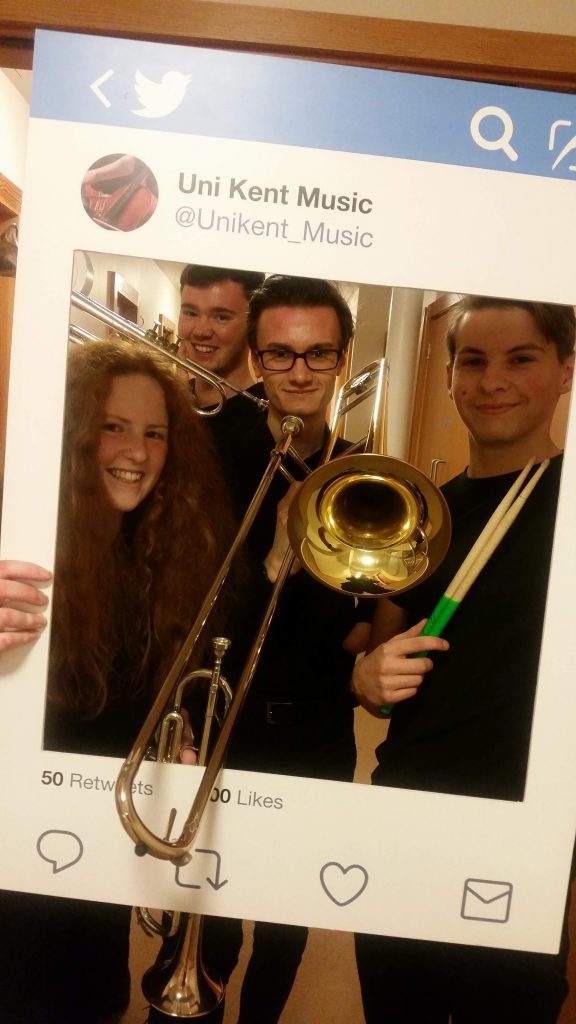
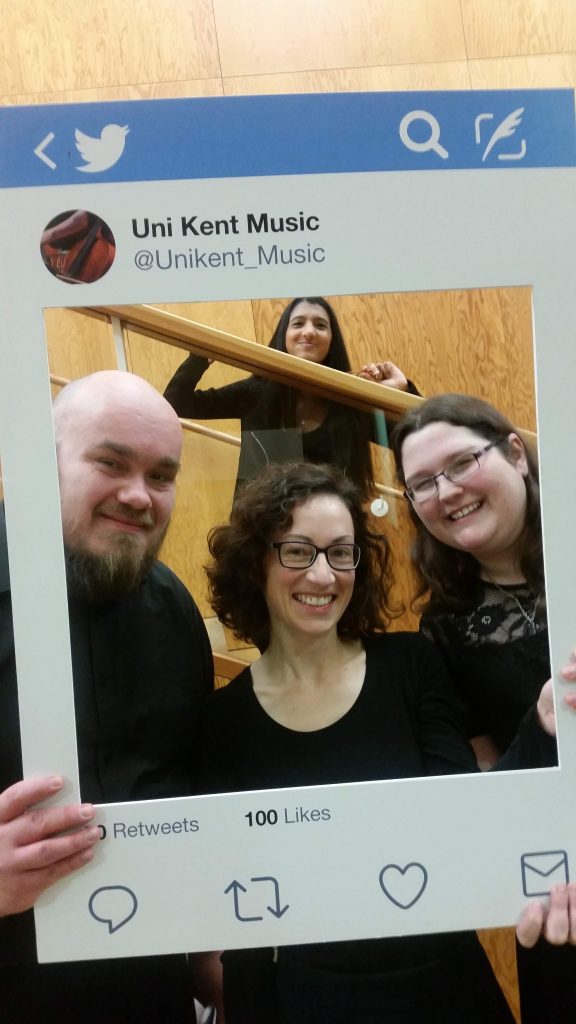
 Thanks to all those who took part; we brought fun, we brought sunshine, we brought love!
Thanks to all those who took part; we brought fun, we brought sunshine, we brought love!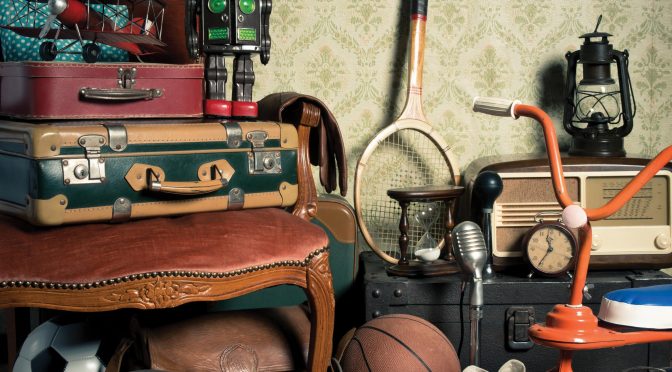
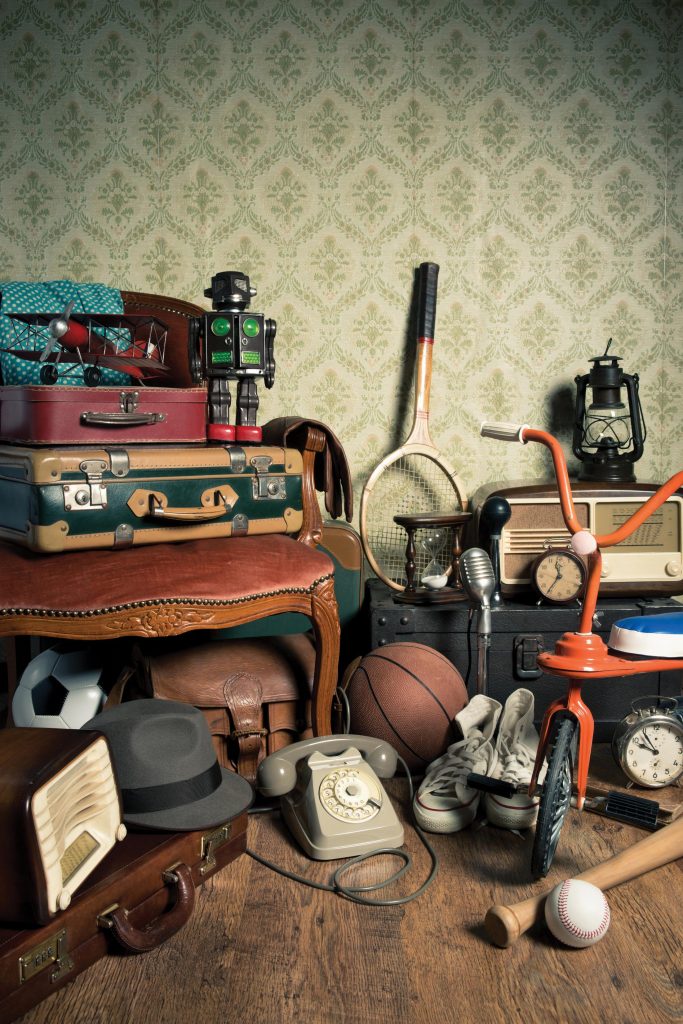
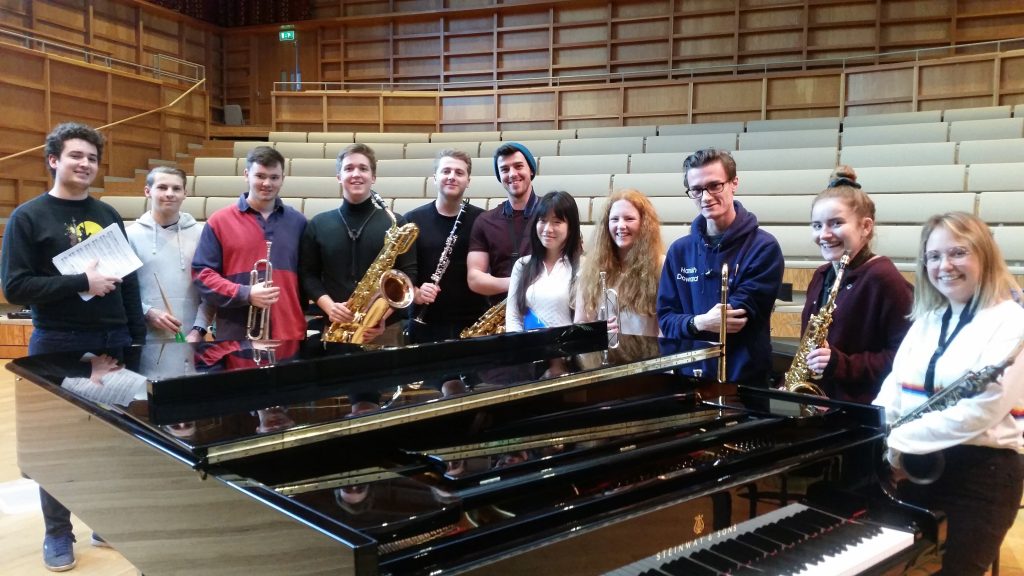
 Tickets are free (reserved in advance
Tickets are free (reserved in advance 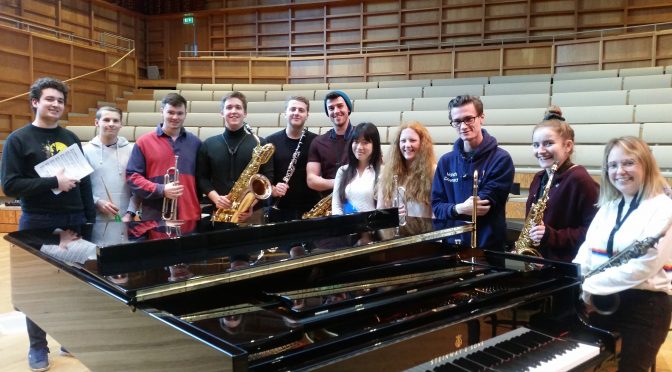
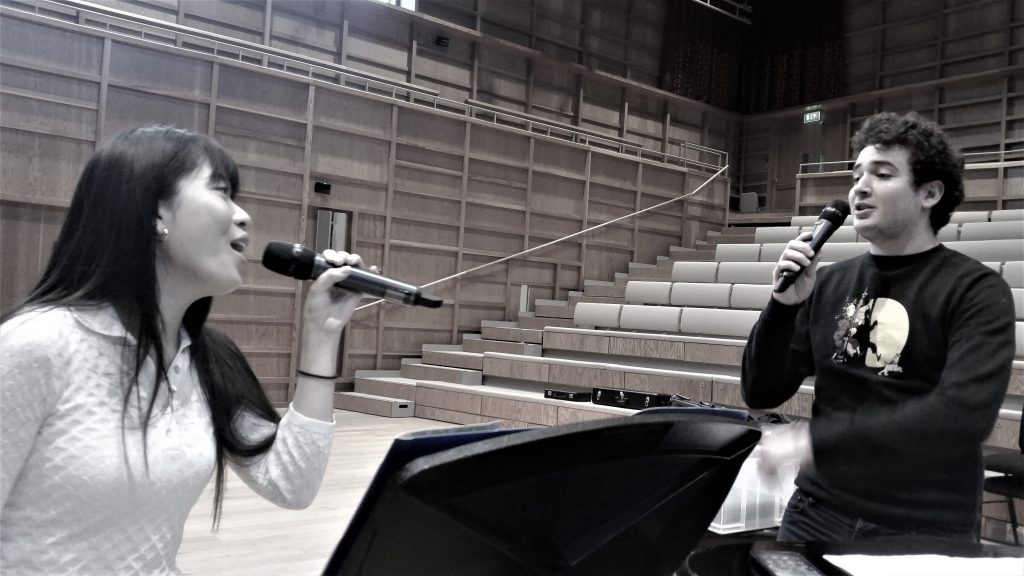 This year, the group is joined by guest singers with an international spirit, second-years Elle Soo (from Singapore) and Robbie Frederick (from Spain). Elle will be familiar to followers of the University Big Band, with whom she sang last year and continues to do so this year; both Elle and Robbie are bringing alive classic tunes including Lady Is A Tramp and Baby, It’s Cold Outside.
This year, the group is joined by guest singers with an international spirit, second-years Elle Soo (from Singapore) and Robbie Frederick (from Spain). Elle will be familiar to followers of the University Big Band, with whom she sang last year and continues to do so this year; both Elle and Robbie are bringing alive classic tunes including Lady Is A Tramp and Baby, It’s Cold Outside.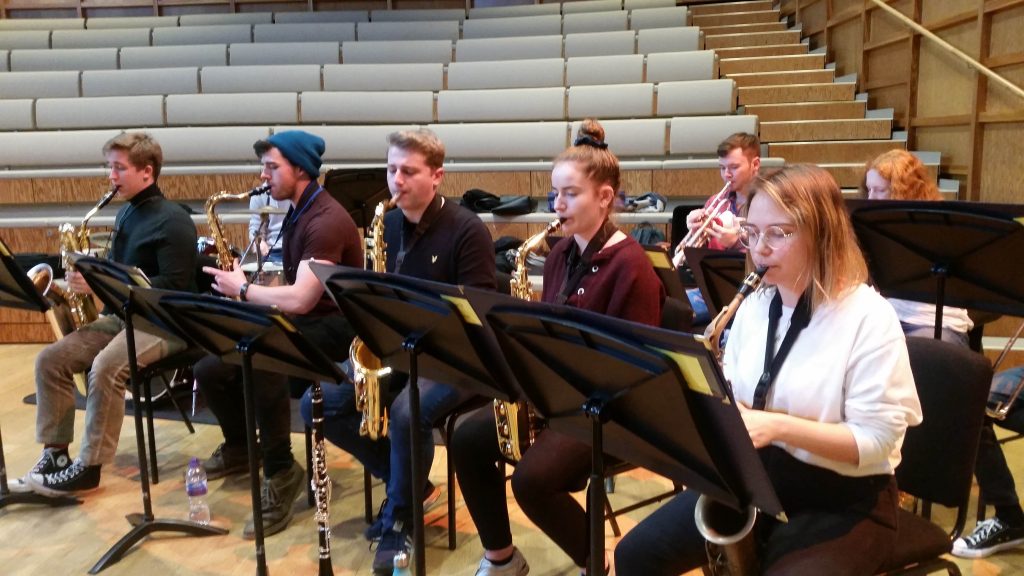 The ensemble will be in action as part of Nostalgia Night on Friday 22 November, performing pieces including Moonlight Serenade, and then taking to the foyer-stage at 1.10pm for A Christmas Tomfoolery, on Weds 11 December, as a prelude to the ‘Christmas Swingalong’ later that day.
The ensemble will be in action as part of Nostalgia Night on Friday 22 November, performing pieces including Moonlight Serenade, and then taking to the foyer-stage at 1.10pm for A Christmas Tomfoolery, on Weds 11 December, as a prelude to the ‘Christmas Swingalong’ later that day.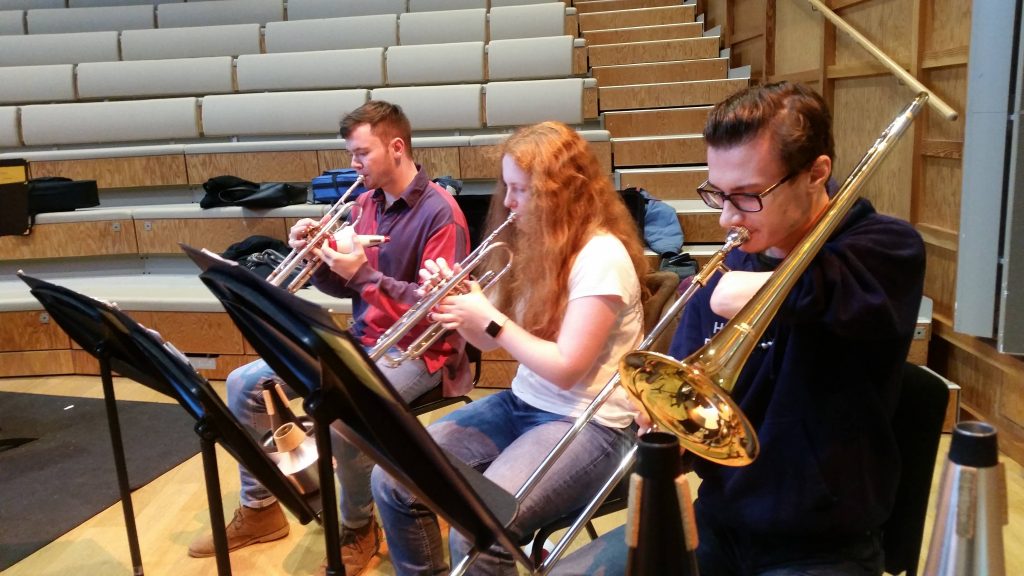 It promises to be a vintage year – make sure you catch them playing this year; details on our What’s One pages
It promises to be a vintage year – make sure you catch them playing this year; details on our What’s One pages 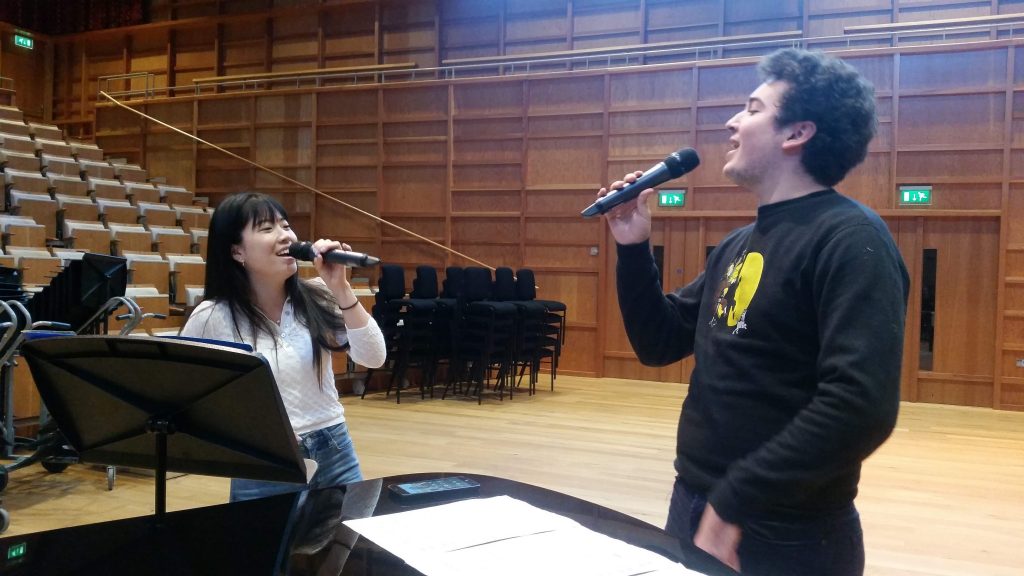
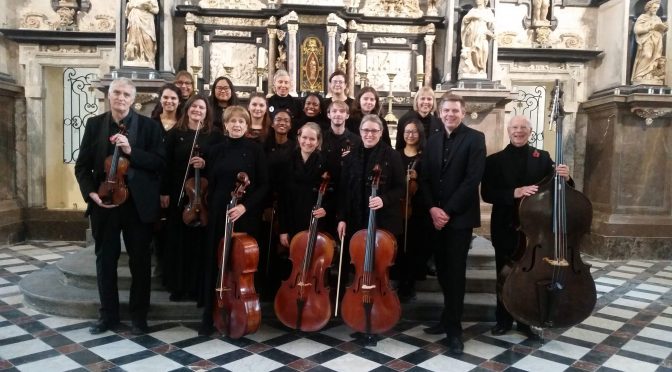
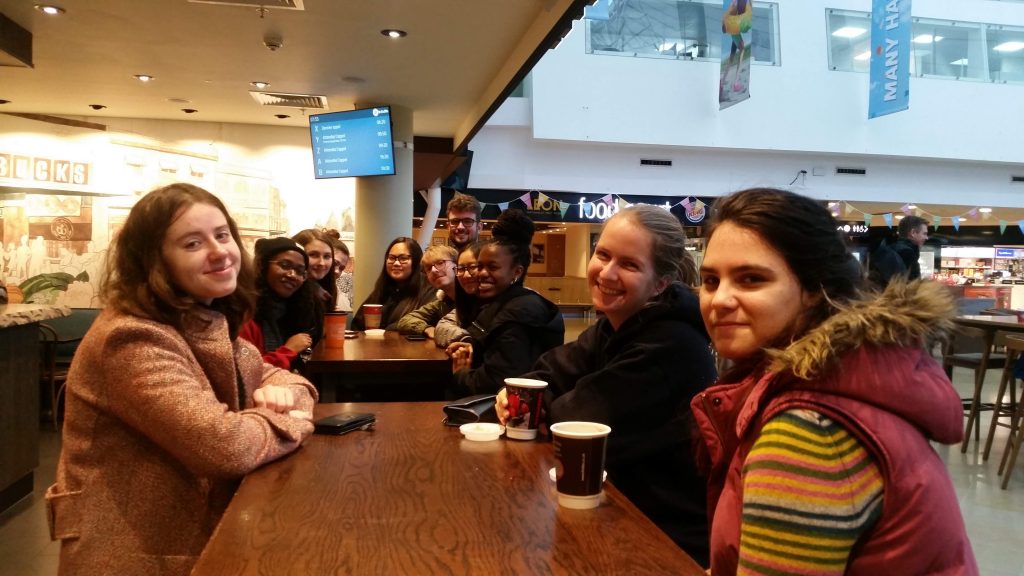
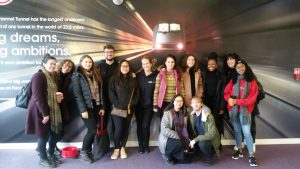 An early morning start saw the coach-load of musicians leaving Colyer-Fergusson in various stages of wakefulness (well, 6.30am on a Sunday can be a little early for some…), with a welcome coffee at the Folkestone terminal of Le Shuttle enlivening the group further still on its way to an 11am (French time) rehearsal in the church beneath glorious November skies.
An early morning start saw the coach-load of musicians leaving Colyer-Fergusson in various stages of wakefulness (well, 6.30am on a Sunday can be a little early for some…), with a welcome coffee at the Folkestone terminal of Le Shuttle enlivening the group further still on its way to an 11am (French time) rehearsal in the church beneath glorious November skies.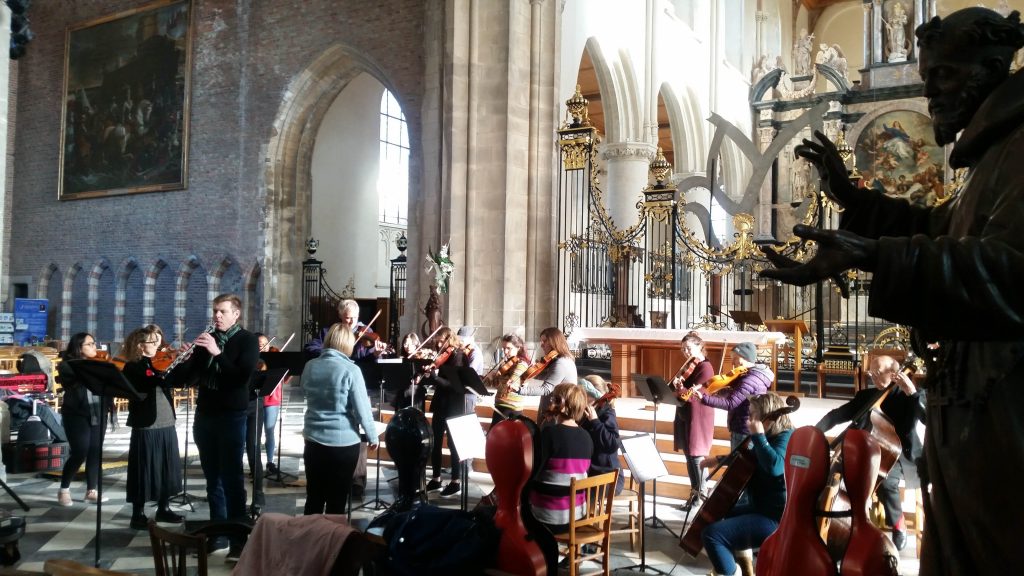
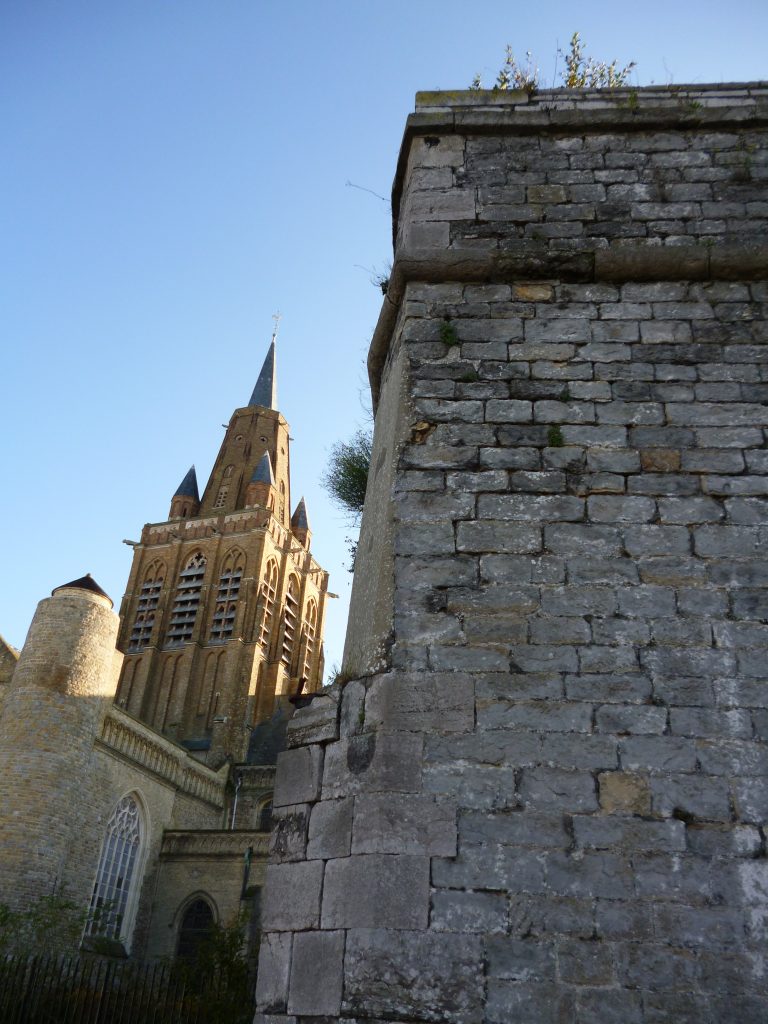 Music by Elgar and Warlock was soon swirling around the nave of the magnificent church, with later on the strains of Marcello’s Oboe Concerto lifting into the roof courtesy of Professor Dan Lloyd, who joined the string group on oboe, stepping out of his busy schedule as Deputy Head of the School of Biosciences.
Music by Elgar and Warlock was soon swirling around the nave of the magnificent church, with later on the strains of Marcello’s Oboe Concerto lifting into the roof courtesy of Professor Dan Lloyd, who joined the string group on oboe, stepping out of his busy schedule as Deputy Head of the School of Biosciences.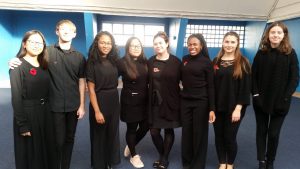 The Camerata’s international make-up mirrors that of the wider University community, with members from Germany, Lithuania, France and Canada, including an Erasmus-student cellist; the Schools of Psychology, Law, Mathematics and Biosciences were also represented by the ensemble’s constituents, many of whom are either current or former University Music Performance Scholars. It’s a testament to the nature of extra-curricular music-making at Kent that it transcends boundaries – geographical, hierarchical, institutional – as it creates communities working together in rehearsal and performance.
The Camerata’s international make-up mirrors that of the wider University community, with members from Germany, Lithuania, France and Canada, including an Erasmus-student cellist; the Schools of Psychology, Law, Mathematics and Biosciences were also represented by the ensemble’s constituents, many of whom are either current or former University Music Performance Scholars. It’s a testament to the nature of extra-curricular music-making at Kent that it transcends boundaries – geographical, hierarchical, institutional – as it creates communities working together in rehearsal and performance.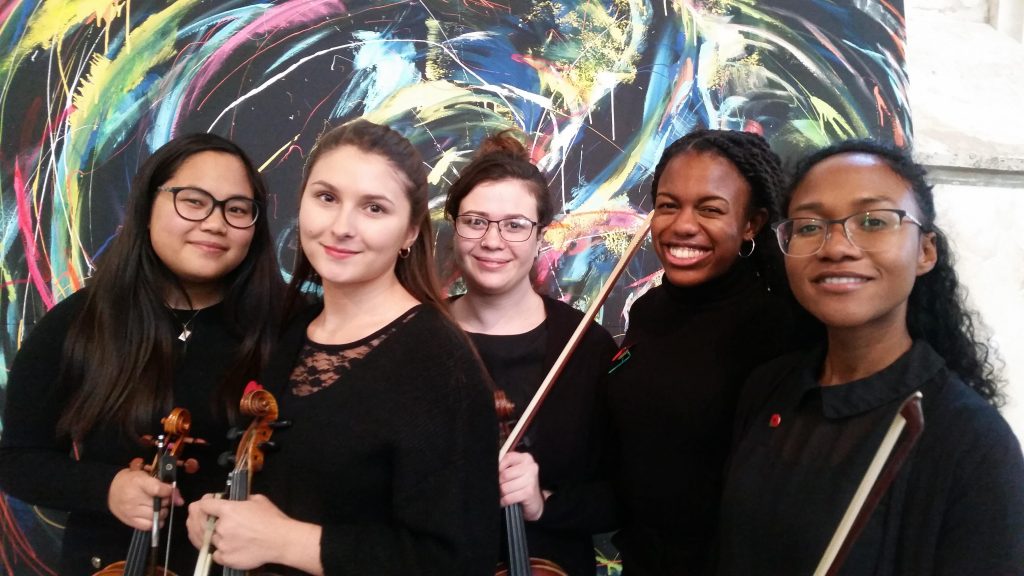 The concert, part of the city’s current festival, drew over six hundred people to witness the power of collaborative creativity which lies at the heart of the University’s vision. We’re already looking forward to the second event in our planned collaboration later in the year.
The concert, part of the city’s current festival, drew over six hundred people to witness the power of collaborative creativity which lies at the heart of the University’s vision. We’re already looking forward to the second event in our planned collaboration later in the year.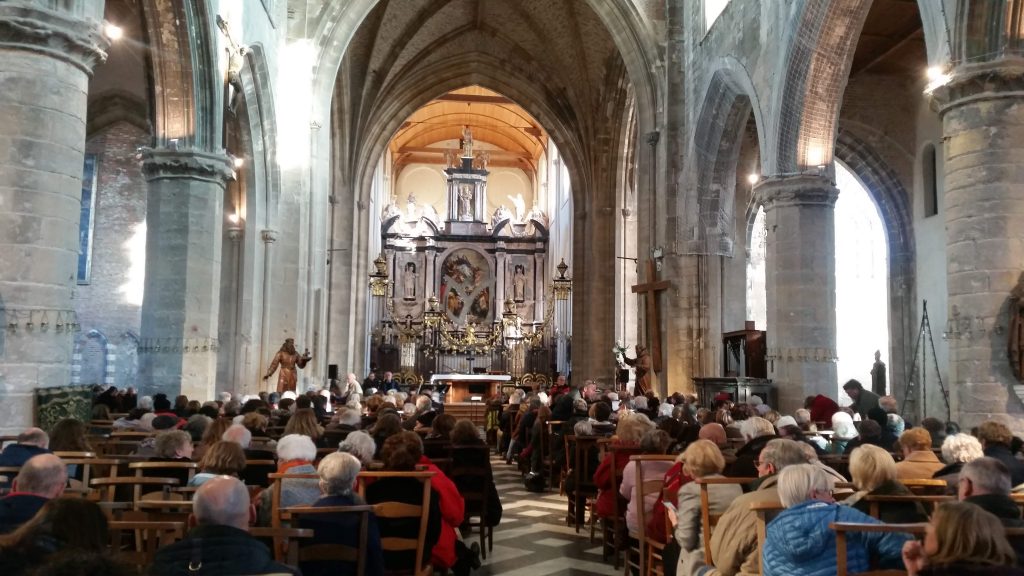 Congratulations to all the performers, to leader Floriane Peycelon and conductor Susan Wanless, on a magnificent ambassadorial showcase that illustrated, to an international audience, what an international University can do.
Congratulations to all the performers, to leader Floriane Peycelon and conductor Susan Wanless, on a magnificent ambassadorial showcase that illustrated, to an international audience, what an international University can do.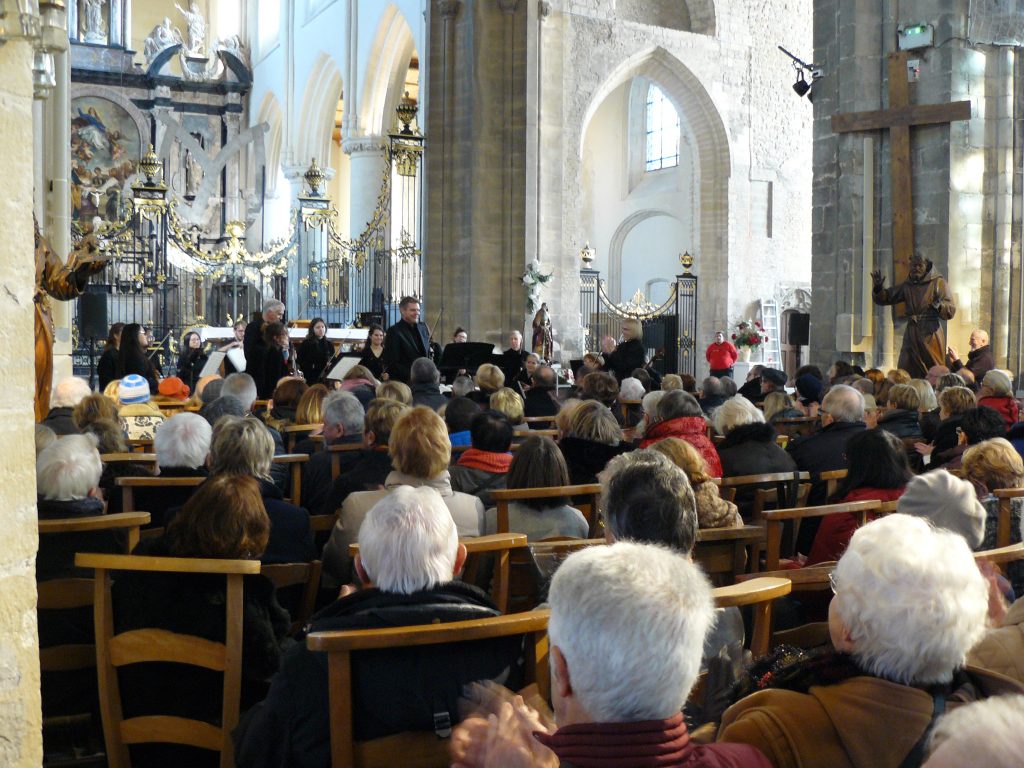
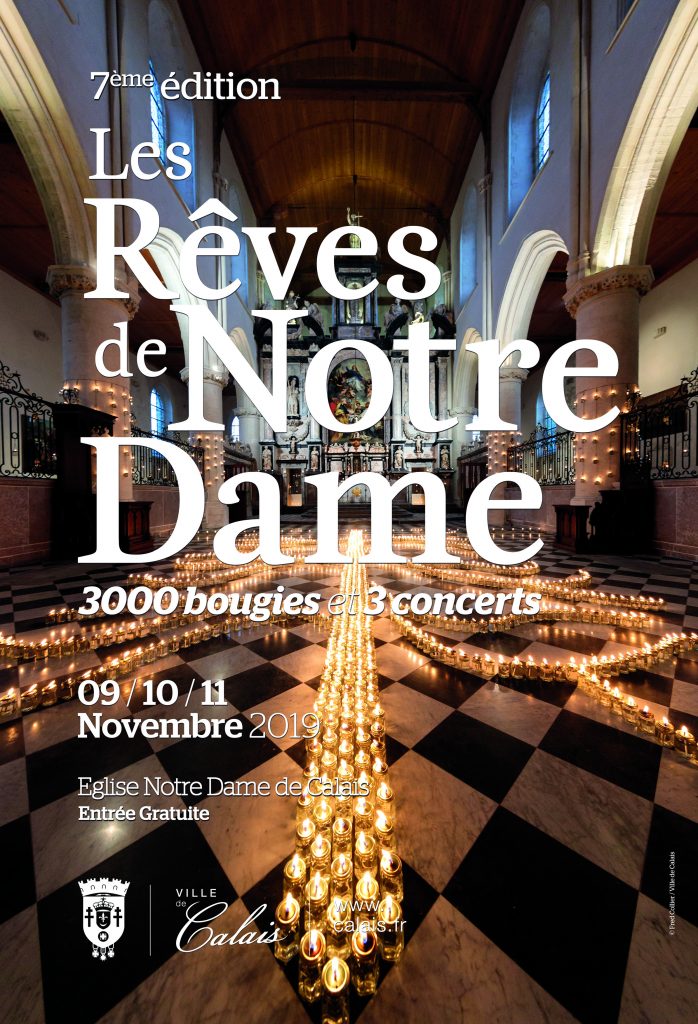
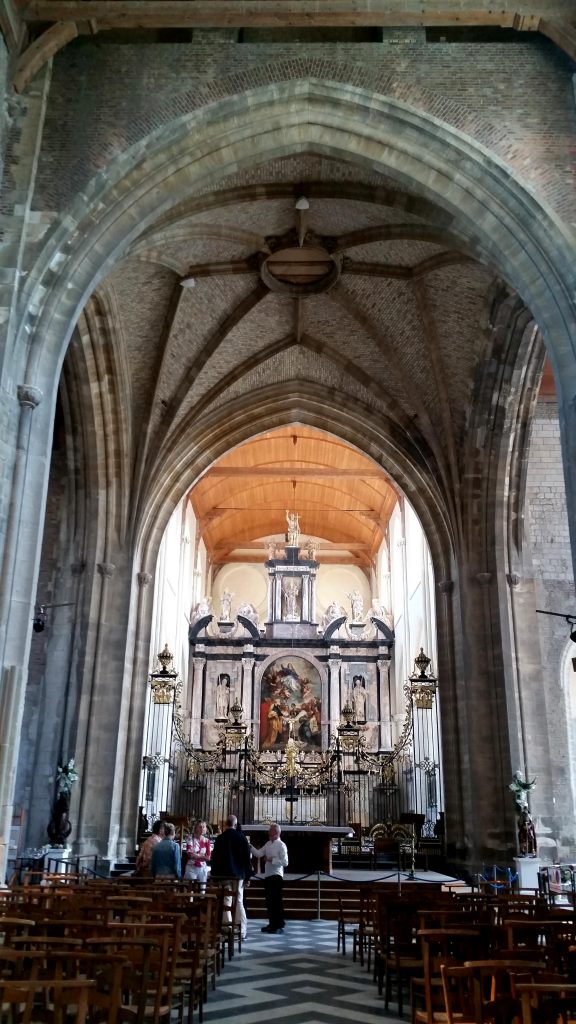 The Camerata last sailed in to port back in March for a performance of Prokofiev’s Peter and the Wolf; we’re looking forward to presenting a largely English musical feast for the burghers of Calais at the end of next week, on Sunday 10 November; should you happen to be in the city at 3pm, the event is free, join University musicians as we celebrate our historic links with the French city-port – event details online
The Camerata last sailed in to port back in March for a performance of Prokofiev’s Peter and the Wolf; we’re looking forward to presenting a largely English musical feast for the burghers of Calais at the end of next week, on Sunday 10 November; should you happen to be in the city at 3pm, the event is free, join University musicians as we celebrate our historic links with the French city-port – event details online 